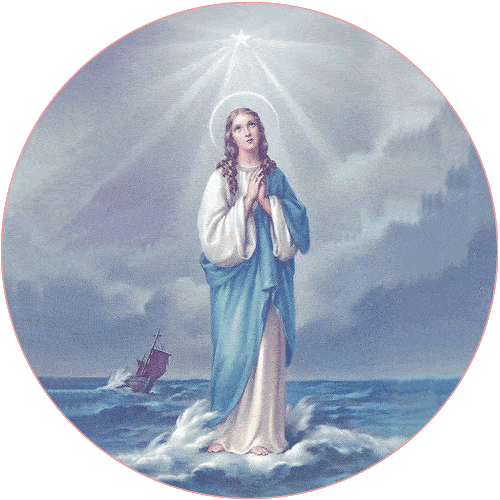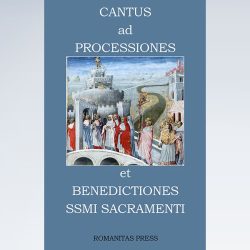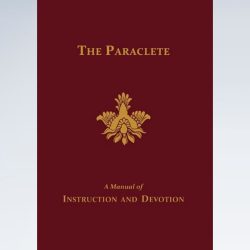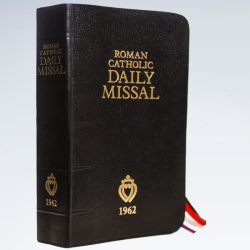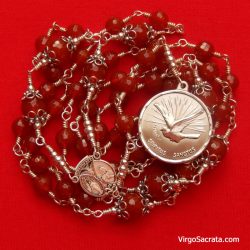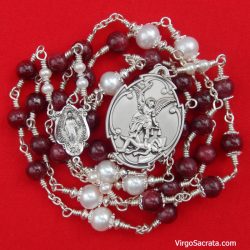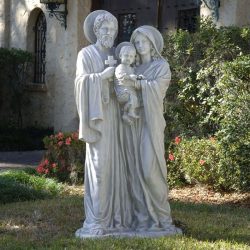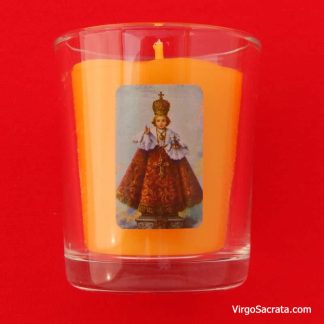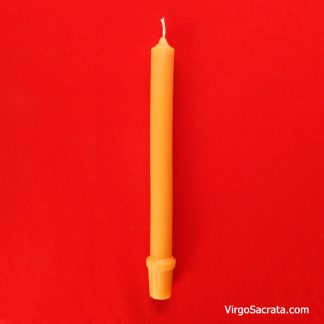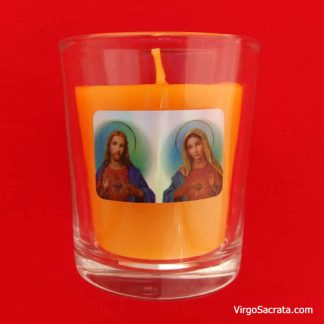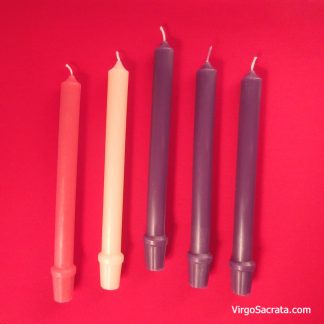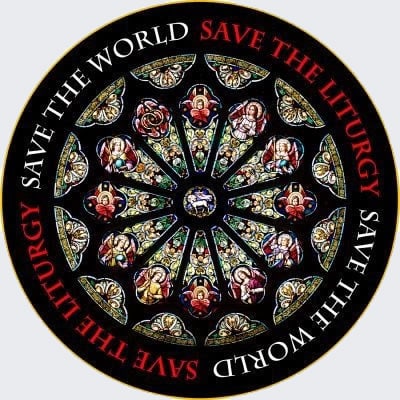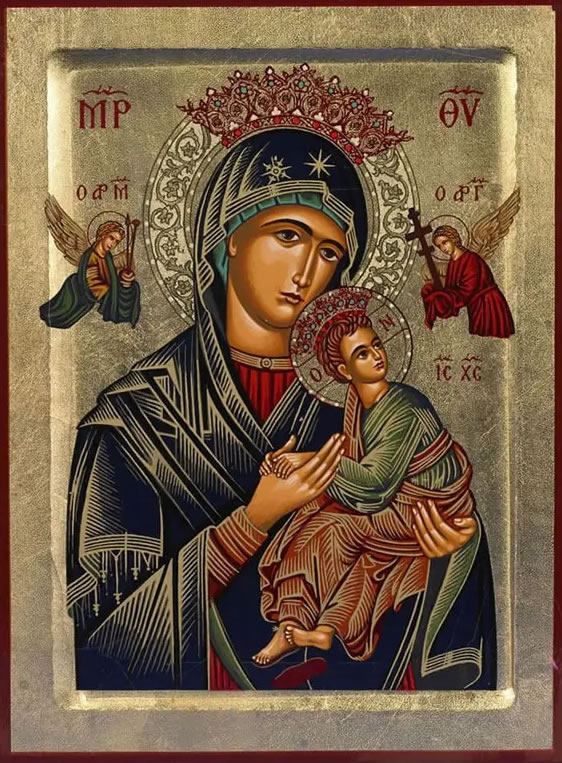

Each part of the icon expresses profound theological meaning. It is important to know the meaning of the parts but also how each part contribute to the whole meaning of the icon.
Tradition states that the icon memorializes an occasion in which the young Christ awoke from a dream frightened by the vision of two angels showing Him the instruments of the Passion: Gabriel holds the cross and nails in the top right of the image. On the top left, Archangel Michael holds the spear, crown of thorns, and the sponge soaked in vinegar.
Frightened He huddles close to His mother, snapping the latchet of His little sandal, so that it dangles from His toe. Like any frightened little boy, He murmurs His mother’s name; and Our Lady like any other mother is quick to pat away His fears.
But the sad look on Mary’s face is indication that she, too, is thinking of the price her little Son must one day pay for our Redemption. She holds Him like a sword to her heart!
The picture of Perpetual Help is a goldmine of sound Marian theology. It is definitely a Mother of Sorrows, a Cradle-pieta: Our Lady grieving not with the dead, but with the living Christ in her arms.
The icon, distinctly Byzantine in style, is replete with all the meaningful symbols.
Greek Initials ΜΡ ΘΥ for “Mother of God”.
Golden Crown, placed on the original picture by order of the Holy See in 1867. It is a token of the many miracles wrought by Our Lady invoked under the title of “Perpetual Help.”
Star on Our Lady’s veil. She is the Star of the Sea . . . who brought the light of Christ to the darkened world . . . the star that leads us to the safe port of Heaven.
Greek Initial for “St. Michael the Archangel“. On the top left, Archangel Michael holds the spear, crown of thorns, and the sponge soaked in vinegar.
Greek Initial for “St. Gabriel the Archangel.” He holds the cross and nails in the top right of the image. These depictions represent Jesus meditating on his Passion.
Mary’s Mouth is small. Symbolizing her few recorded words and the depth of her contemplation.
Red Tunic. The color worn by virgins at the time of Christ.
Dark Blue Mantle. The color worn by mothers in Palestine. Mary is both Virgin and Mother.
Christ’s Hands turned palms down into His Mother’s indicate that the Graces of Redemption are in Her keeping
Mary’s Eyes. The refined sadness of her eyes tells of her compassion in all things with Christ. But observing the picture more closely you note that though her head inclines toward Christ, her eyes are looking out at us. Her compassion extends to all the aching members of the Mystical Body, whose Head is Christ her first-born Son. It calls to mind our plea in the Salve Regina: “Turn then, most gracious Advocate, thine eyes of mercy toward us”, acclaiming her prerogative of Mediatress of all Graces.
Greek Initials ΙϹ ΧϹ for “Jesus Christ.”
Mary’s Left Hand supporting Christ possessively: She is his Mother. It is a comforting hand for everyone who calls on Her.
The sandals. The loose sandal represents Christ’s divine nature, untied from the bounds of earth. The sandal that remains secure is symbolic of His human nature. Our Lady of Perpetual Help is also an icon expressing the truth of the incarnation.
The entire background is golden symbolic of Heaven where Jesus and Mary are now enthroned. The gold also shines through their clothing showing the heavenly joy they can bring to tired human hearts.
Some History Behind the Our Lady of Perpetual Help Icon
The Mother of God of the Passion, known in the West as Our Lady of Perpetual Help, is a variant of Hodegetria. The most venerated icon of the Hodegetria type, regarded as the original, was displayed in the Monastery of the Panaghia Hodegetria in Constantinople, which was built specially to contain it. It was said to have been brought back from the Holy Land by Eudocia, the wife of emperor Theodosius II (408–450), and to have been painted by Saint Luke the apostle himself. The icon was double-sided, with a crucifixion on the other side, and was “perhaps the most prominent cult object in Byzantium”, venerated for centuries at Constantinople as a miraculous icon. It was destroyed by the Turks in the year 1453.
One of the pictures, painted by an unknown artist in Crete in the 14th or 15th century, was brought to Rome c. 1495 by a merchant who apparently had stolen it from some church in Crete. On March 27, 1499, the picture of Our Lady of Perpetual Help was solemnly enthroned on the high altar of St. Matthew’s church, cared for by the Augustinians.
Later, the same icon was exposed for public veneration above the high altar of the church of Sant’Alfonso on April 26, 1866.
Our Lady of Perpetual Help Devotion
- Place a picture of Our Lady of Perpetual Help in a prominent place in your house, and before the picture two beeswax candles, which should be burning while the prayers of the Novena are being recited.
- Say nine Hail Marys each day of the Novena, with one of the prayers.
- If possible, have all the members of your family join in the Novena.
- Perform little acts of self-denial. Give alms to some poor person or assist in other good works.
- Make some promise to Our Blessed Lady, should the request be granted, for instance, to have a Mass of Thanksgiving said in her honor.
- Receive the Sacraments of Penance and Holy Communion during the Novena, thereby rendering yourself more worthy to obtain the favor asked.
A Novena in honor of Our Lady of Perpetual Help may be made at any time during the year; but it is very appropriate to make it during the nine days preceding the principal feasts celebrated by the Church in her honor, which are the following:
- The Purification, Feb. 2. Novena begins January 24
- The Annunciation, Mar. 25, Novena begins March 16
- Feast of Our Lady of Perpetual Help, the Sunday preceding June 24
Novena begins Friday of the foregoing week - The Visitation, July 2, Novena begins June 23
- The Assumption, August 15, Novena begins August 6
- The Nativity, September 8, Novena begins August 30
- The Presentation, November 21, Novena begins November 12
- The Immaculate Conception, December 8, Novena begins November 29
Sources:
Manual of the Confraternity of Our Lady of Perpetual Help and Saint Alphonsus
by Archconfraternity of Our Lady of Perpetual Help and St. Alphonsus
Novena in Honor of Our Mother of Perpetual Help

-
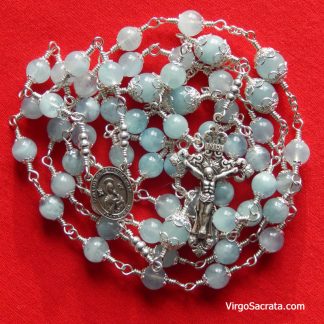 Our Lady of Perpetual Help Rosary ChapletUS$ 460.00
Our Lady of Perpetual Help Rosary ChapletUS$ 460.00 -
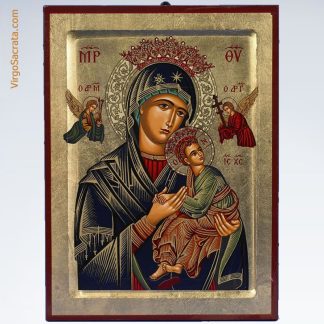 Our Lady of Perpetual Help Hand-Painted IconUS$ 70.00 – US$ 195.00
Our Lady of Perpetual Help Hand-Painted IconUS$ 70.00 – US$ 195.00 -
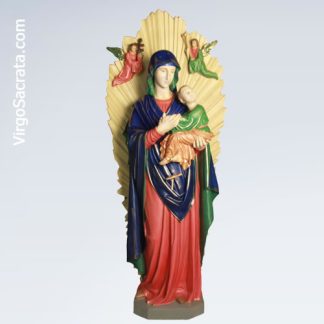 Our Lady of Perpetual Help Statue with Shrine 73″US$ 6,300.00
Our Lady of Perpetual Help Statue with Shrine 73″US$ 6,300.00 -
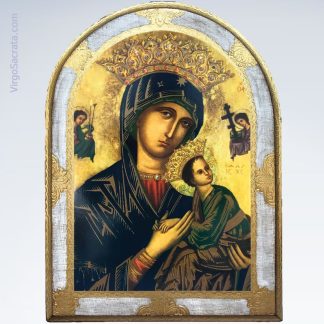 Our Lady of Perpetual Help Florentine Plaque 12″ x 15.5″US$ 140.00
Our Lady of Perpetual Help Florentine Plaque 12″ x 15.5″US$ 140.00 -
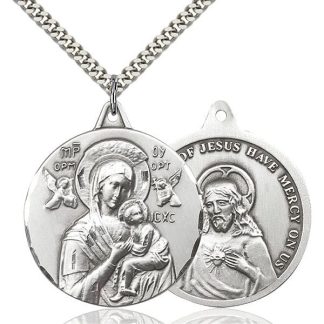 Our Lady of Perpetual Help Medal Pendant 1 1/4US$ 120.00 – US$ 6,036.00
Our Lady of Perpetual Help Medal Pendant 1 1/4US$ 120.00 – US$ 6,036.00 -
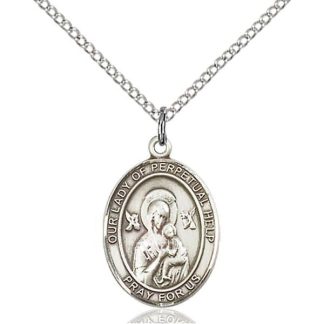 Our Lady of Perpetual Help Oval Medal Pendant 3/4″US$ 44.00 – US$ 1,277.00
Our Lady of Perpetual Help Oval Medal Pendant 3/4″US$ 44.00 – US$ 1,277.00
VIRGÓ SACRÁTA is a Christian mission-driven online resource and shop inspired from the beauty of Catholic faith, tradition, and arts. Our mission is to “Restore All Things to Christ!”, in continuing the legacy of Pope St. Pius X under the patronage of the Blessed Virgin Mary. “Who is she that cometh forth as the morning rising, fair as the moon, bright as the sun, terrible as an army set in battle array?” O Mary, conceived without sin, pray for us who have recourse to Thee.
